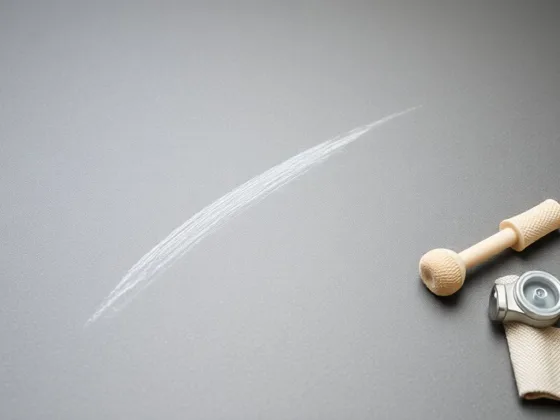Table of Contents Show
Picture this: you’re lounging by your pool on a sunny day, ready to take a refreshing dip. But, as you approach the water, you notice unsightly stains marring the pristine blue surface. Don’t fret! We’ve got you covered with the best ways to remove stains from your pool, so you can dive into crystal-clear waters.
Identify the Culprit
Before tackling the stain, it’s important to identify its source. Pool stains can be caused by various factors, such as metals, organic matter, or even algae. By determining the type of stain, you can choose the most effective removal method.
The first step to identifying the culprit of your pool stain is to look at its color. Different types of stains have different colors, which can give you a clue about what caused them. Here are some examples of common stain colors and their possible sources:
- Green-brown stains: These are likely caused by organic matter, such as leaves, algae, or dirt. They can also be caused by copper or iron in the water. To remove these stains, you will need to use a chlorine-based cleaner that can kill the organic matter and oxidize the metals12.
- Red-blue stains: These are likely caused by berries or other fruits that fall into the pool. They can also be caused by copper or iron in the water. To remove these stains, you will need to use a chlorine-based cleaner that can kill the organic matter and oxidize the metals12.
- Green-blue-black stains: These are likely caused by manganese in the water. Manganese is a naturally occurring metal that can be present in well water or municipal water supplies. It can also be found in some pool chemicals, such as algaecides or stabilizers. To remove these stains, you will need to use a metal stain remover that contains ascorbic acid (vitamin C), which can dissolve manganese13.
- Green-brown-red stains: These are likely caused by iron in the water. Iron is a naturally occurring metal that can be present in well water or municipal water supplies. It can also be found in some pool chemicals, such as algaecides or stabilizers. To remove these stains, you will need to use a metal stain remover that contains ascorbic acid (vitamin C), which can dissolve iron13.
- Pinkish-red stains: These are likely caused by copper in the water. Copper is a naturally occurring metal that can be present in well water or municipal water supplies. It can also be found in some pool chemicals, such as algaecides or stabilizers. To remove these stains, you will need to use a metal stain remover that contains ascorbic acid (vitamin C), which can dissolve copper13.
- Brown-black-purple stains: These are likely caused by manganese in the water. Manganese is a naturally occurring metal that can be present in well water or municipal water supplies. It can also be found in some pool chemicals, such as algaecides or stabilizers. To remove these stains, you will need to use a metal stain remover that contains ascorbic acid (vitamin C), which can dissolve manganese
Metals Be Gone
If metals like iron or copper cause your pool stain, a sequestrant can be your best friend. These chemical compounds bind to the metals, preventing them from staining the pool’s surface. Simply follow the manufacturer’s instructions and add the sequestrant to your pool water. Regular maintenance with a sequestrant can help keep metal stains at bay.
Bye-Bye Organic Stains
Organic stains, such as those caused by leaves, grass, or berries, can be stubborn. Start by using a pool brush to scrub the affected area gently. If the stain persists, try using a pool enzyme cleaner. Enzymes break down organic matter, making it easier to remove. Follow the product instructions and watch those stains vanish.
Related:
Algae Annihilation
Algae can be a common cause of pool stains, especially in poorly maintained pools. To get rid of algae stains, start by brushing the affected area vigorously. Then, shock your pool with a high dose of chlorine to kill any remaining algae. Finally, use an algaecide to prevent future outbreaks. Remember to follow the instructions on the products and maintain proper water chemistry to keep algae at bay.
Related Video:
@missy_del Quick and easy way to remove stains from a fiberglass pool 🏊♀️ #fiberglasspools #fyp #foryou #poolparty #stainremover ♬ original sound – Missy DeLozier
Prevention is Key
The best way to deal with pool stains is to prevent them from happening in the first place. Regular pool maintenance, including proper water balance, filtration, and cleaning, can go a long way in keeping your pool stain-free. Additionally, using a pool cover when the pool is not in use can help protect it from debris and organic matter.
Here are some tips on how to do that:
- Test and balance your water at least twice a week. This will ensure that your pool water has the right pH, chlorine, and calcium levels to keep organic and metal stains from forming. You can use a test kit that contains test strips that change color when dipped in the water.
- Keep your pool properly sanitized. This will prevent algae, bacteria, and other contaminants from growing in your pool water and causing stains. You can use a chlorine-based cleaner that contains sodium hypochlorite (bleach) or sodium thiosulfate (sulfuric acid) to kill the organic matter12. You can also use an algaecide or a stabilizer to prevent algae growth.
- Skim and brush the pool 2-3 times each week. This will remove any dirt, debris, leaves, or other particles that can accumulate on the pool surfaces and cause stains. You can use a manual or automatic skimmer to collect the floating debris. You can also use a pool brush or a net to scrub the walls and floor of the pool.
- Vacuum at the end of each week for a spotless and debris-free floor. This will remove any dirt, dust, sand, or other particles that can scratch or stain your pool floor. You can use a manual or automatic vacuum cleaner to suck up the debris.
- Add a mineral sequestering agent to lock up excess minerals. This will help prevent calcium buildup on your pool surfaces that can cause stains. You can use a product that contains calcium carbonate or calcium silicate to bind with excess calcium in your pool water.
Conclusion
Stains in your pool can be a real eyesore, but they can be easily removed with the right approach. Remember to identify the type of stain first, whether it’s caused by metals, organic matter, or algae. Then, choose the appropriate removal method, such as using a sequestrant for metal stains, an enzyme cleaner for organic stains, or a combination of brushing, shocking, and algaecide for algae stains. And don’t forget, regular maintenance and prevention are key to keeping your pool looking pristine all year round.










